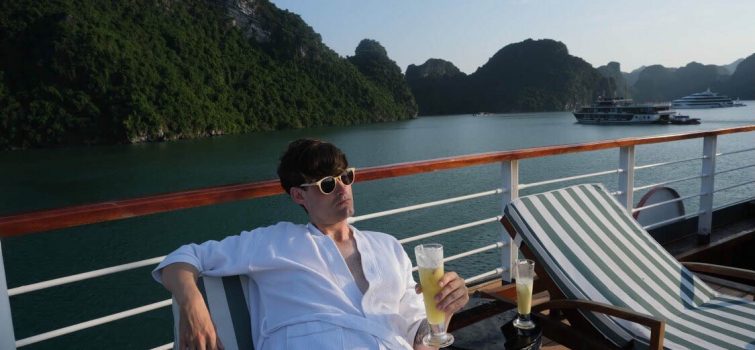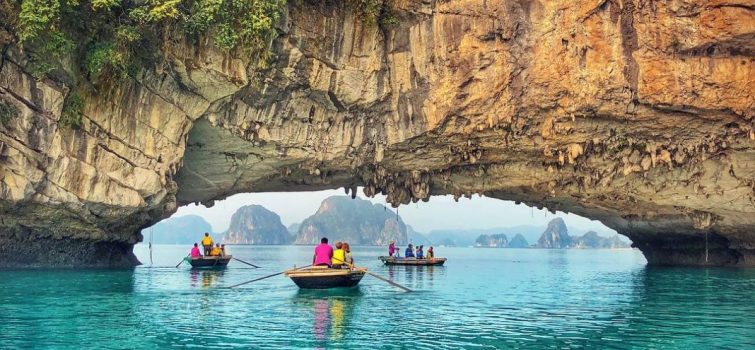Vietnam in a day
No country can truly be grasped in a single trip, whether it be a foodie weekend, a two-week family vacation, a six-month backpack, or even a multi-year immersion as an expat. Personally, I’ve lived in Vietnam almost 6 years, I’m married to a Vietnamese woman, and I speak enough Vietnamese to get to know people (assuming they can handle my heavy accent), but I still find it requires a lot of effort to dig deep into the culture and history to get a feel for the place. Most trips to the countryside give me the tiniest scratch of the surface into the joys and struggles of the people there and even visiting every significant place of interest in a new city only raises more questions and leaves me wanting more to feel satisfied with my experience. Recently, however, I’ve come the closest I’ve ever been to having an all-encompassing experience of Vietnam and it all took place in 24 hours.
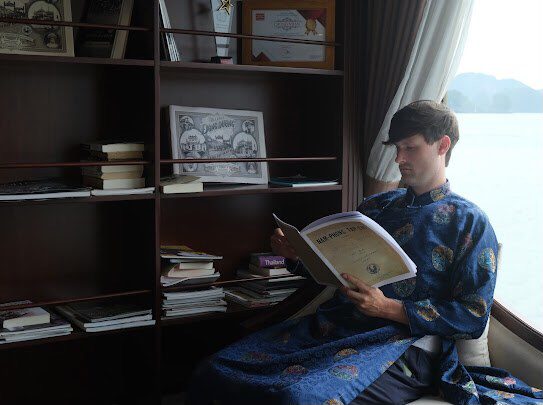
Ok, I know this article is called Vietnam in a day, but really my experience was over the course of 24 hours, and after all there are 24 hours in a day so I’m sticking with it. At noon I boarded the ship named Heritage Binh Chuan (not having a clue how changed my life would be just 24 hours later) and by noon the next day I was back at my port of entry. This particular cruise of Ha Long bay was to celebrate my first anniversary with my wife (I’ll accept your congrats in the comments, thank you, thank you) so we decided to splurge on a luxury cruise, something neither of us have ever considered before this occasion.
The cruise started as any good luxury cruise should, with a welcome from the manager and captain, but before we were even escorted to the dining room for the first complimentary drink and lunch there was one jaw-dropping detail that stood out to us. The first detail which surrounds you is the Indochine interior design. Every inch of the boat has been carefully crafted to transport you back to the time of Bach Thai Buoi, the shipping entrepreneur who revolutionized the Vietnamese shipping industry by leading the movement to have ships designed and built solely by Vietnamese hands. As a history nerd I indulged in the pamphlets scattered about the ship that told of his fight against colonialism and gave greater context to the interior design of the ship. Even someone not as enthralled with history as I am, though, cannot help but be immediately thrust into the French colonial period as the ship is essentially a living history museum with the stylized, wooden decor and early photographs from around Northern Vietnam.

The food served at the lunch buffet was excellent, but paired with the exemplary service from the staff it made the first dining experience on the ship top notch, a standard which the crew upheld the entire cruise. Anyone should expect the food on a luxury cruise to be good so I won’t go into detail about that, but one special touch unlike anywhere I’ve stayed before is the dinner “dress code”. Every room on the ship has an áo dài, the traditional clothing of Vietnam, for each guest in that room and the majority of guests wore theirs to dinner. This is a gesture that says, “You’re not simply WITH Vietnamese for dinner, you ARE Vietnamese, even if just for tonight.” It gives you more than just a taste of Vietnam.
Another set of clothes in every room is the martial arts clothes so you can feel comfortable joining the sunrise Vovinam class, very much like Tai Chi. This class is on the sundeck of the ship, a place that offers far more than this class and even more than any human culture could. The sundeck offers a 360 degree view to millions of years of geology. All throughout Vietnam there is a similar type of geological feature, called karsts, formed from the limestone spread across half of the country. You can see these sharp, jagged peaks that Vietnam is famous for in every province in the north and you drive past miles of them taking any highway through the countryside. The biggest difference is that all these landlocked karsts are visible only from the road, which is the bottom of any karst valley. The sundeck of Heritage Binh Chuan places you many feet above sea level and with this elevated view you begin to get a scope for how widespread this feature is and how influential it has been on the shaping of Vietnamese culture. Luckily the sundeck is not the only place on the ship with magnificent views as every exterior wall in every room, bathroom, library, and gallery is framed with massive windows peering into the bay. The ship, though wonderful, can be described in words, but for the bay I must quote cinema and say, “No one can be told what Ha Long Bay is, you have to see it for yourself.”
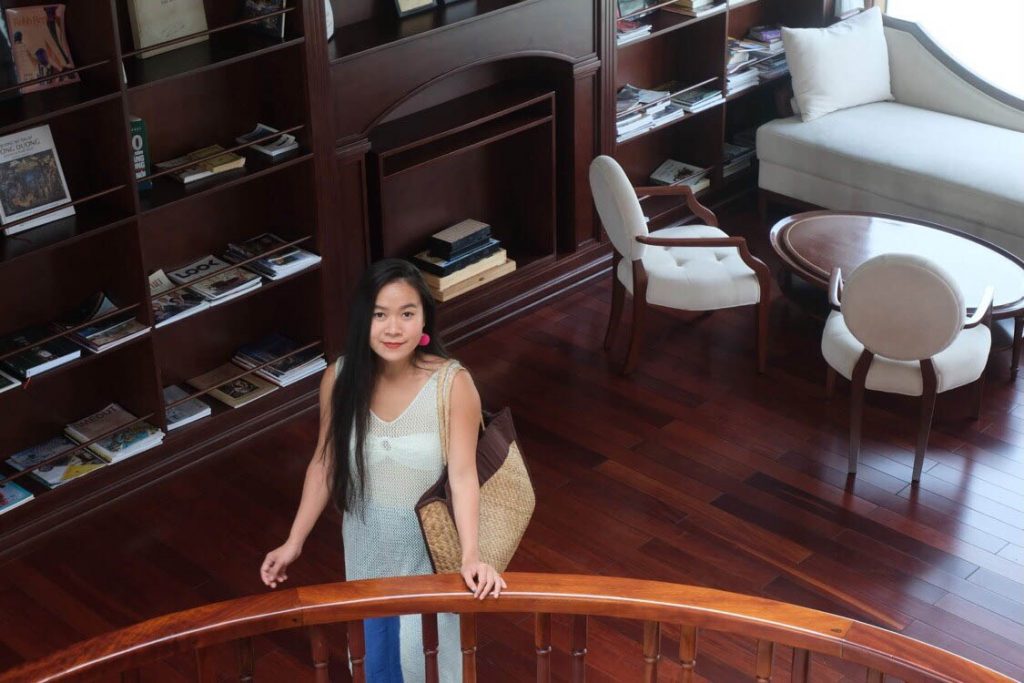
Every single outside wall of the ship is a window looking out to the bay, but those aren’t the only carefully considered walls on the vessel. Every inside wall is decked either in early photographs as mentioned before, or something even more stunning, paintings of daily life from around Vietnam. One moment you can be in the Mekong delta and with a few steps across the ship you’re in the living room of a wealthy Hanoian family. You can see scenes of war juxtaposed with traditional musicians. All, or at least most from what I can tell, of the paintings are by the same artist, so the style is consistent throughout the ship. Clearly painted by the hand of a master, they are not realistic, but heavily stylized to put the viewer into a dreamlike state. They are ethereal, yet almost tangible, like the lives of those we’ll never know whose experiences echo into our own. They are windows also, but unlike the outer windows of the ship which look onto the landscape that shaped the culture of Vietnam, they are windows that peer into the Vietnamese soul.
At once, the cruise was modern yet steeped in history, it was artificial ringed with the natural, and it was exciting but tinged with the somber. It was humanity at its finest in the ways that any culture can reach its zenith, however it was characteristic of the Vietnamese in only the ways that they can be Vietnamese. When it came to an end I must admit I was sad, but I did not feel like I had missed or overlooked anything, in fact my wife and I couldn’t talk about much else for the next few days because even then we were still digesting the experience.
Through the sadness of it having ended, I felt incredibly lucky that I live in a time and place where something like that is possible. I feel fortunate that the small price of a ticket could stamp my memory with more than just a trip or a taste of luxury, but it could allow me to know a place, and even more importantly, allow me to know a people.
Joseph A. Lewis
Vietnam – Seven Reasons to Visit
Travel is all about destinations, experiences and memories. CEO Lux Group Pham Ha suggests a new slogan and tagline for Vietnam Tourism.
The gods did not compromise when they chose to endow this small Far Eastern country on the coast of the East Sea. Resembling the shape of a serpent, Vietnam has an array of natural and cultural riches that make it one of the world’s must-visit destinations.
The tagline for Vietnamese tourism, “Touching the heritage,” invokes the country’s blend of heritage and modern life for travellers who wish to experience the defining characteristics of V.I.E.T.N.A.M.

Son Doong Caves
V – Varied landscape
Vietnam is one of the favourite playgrounds of Mother Nature, boasting a wondrous blend of mountains, highlands, caves, rivers, plains, beaches, and epic delta regions.
With Mount Fansipan, as its backdrop, Sapa is home to terraced rice fields, cascading waterfalls, and secluded tribal villages perched on distant slopes. Halong Bay is the perfect getaway to experience luxury cruises as well as outdoor activities such as kayaking. It is an enthralling experience to cruise amidst the towering limestone karsts jutting out of the Gulf of Tonkin. The endless spectacle of the limestone world continues further south in Trang An and Tam Coc located in Ninh Binh province, offering limitless opportunities for travellers.
Complementing the Central Highlands, exquisite pristine beaches enrich the beauty of Central Vietnam. Son Doong Cave, the world’s largest cave system, is a particular highlight, although it remains difficult to explore. However, this imposing cave kingdom in Phong Nha and Ke Bang features many more, easy to explore yet stunning caves, grottoes, and underground rivers. Impressive coffee plantations sprawl over the highlands of Buon Ma Thuot, whilst Dalat is surrounded by spectacular scenery and churning waterfalls. The sandy shores of Cham Island, Nha Trang, and Quy Nhon meet the turquoise sea where scuba divers can explore the rich aquamarine ecosystem. Following the course of the mighty Mekong River, South Vietnam is equally photogenic. The river branches off into many estuaries, drawing up an agritourism paradise.

The one thing you must do in Vietnam: attend a water puppet show
I – Indigenous culture
The country’s indigenous cultures bear the marks of China, Japan, and France and a homestay within the ethnic communities is a special way to learn about their culture. Whether in the north, centre or south, there are significant cultural treasures and celebrations by individual communities expressed through festivals and performances. The A-O show portrays the rural lifestyle of farmers and fishermen nationwide. The Quintessence of Tonkin show narrates the ancient tale of the Thay Pagoda, Buddhism, and literature. Traditional music and folk art can be gleaned through the performances of Xoan and Cheo singers, while the captivating Water Puppet show in Hanoi, which originates back to the Red River Delta, is also a must-see. Mythology is an integral part of Vietnamese culture and beliefs and legends revolve around four sacred creatures – the Dragon, Phoenix, Turtle, and Unicorn. There are many colourful festivals observed all year around while the most important one is Tet – Vietnamese Lunar New Year which foreign visitors need to experience at least once.
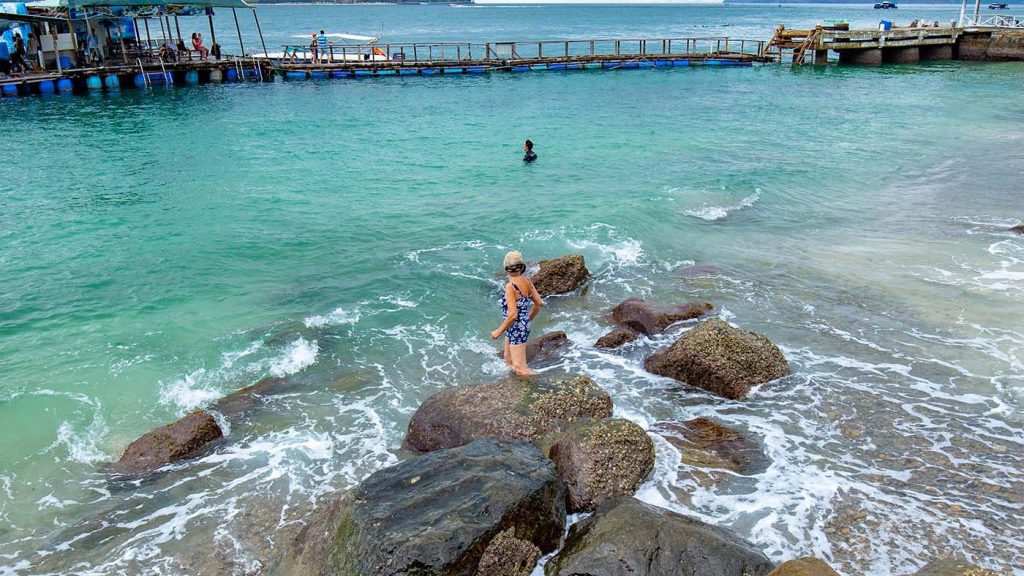
Relax time at beautiful beach with day tour of Emperor Cruises Nha Trang
E – Exotic beaches
Undeniable luxury and incredible visual treats are on offer along the nation’s 3,260-kilometre coastline, home to some of the most romantic beaches and islands in the world. Mystical hideaways, secluded beaches, and coves on remote islands, the stretches of white and golden sands fringing the seas at My Khe, Nha Trang, Vung Tau, Phu Quoc, and the Con Dao archipelago are high on the wish-lists of beach lovers. The crystal-clear water offers unrestricted visibility of colourful marine life as well as swimming, snorkelling, scuba diving, and kayaking. Luxury beach resorts and hotels offer idyllic accommodation. Even the most remote are home to boutique resorts for luxury in seclusion, allowing discerning travellers to experience life close to nature.
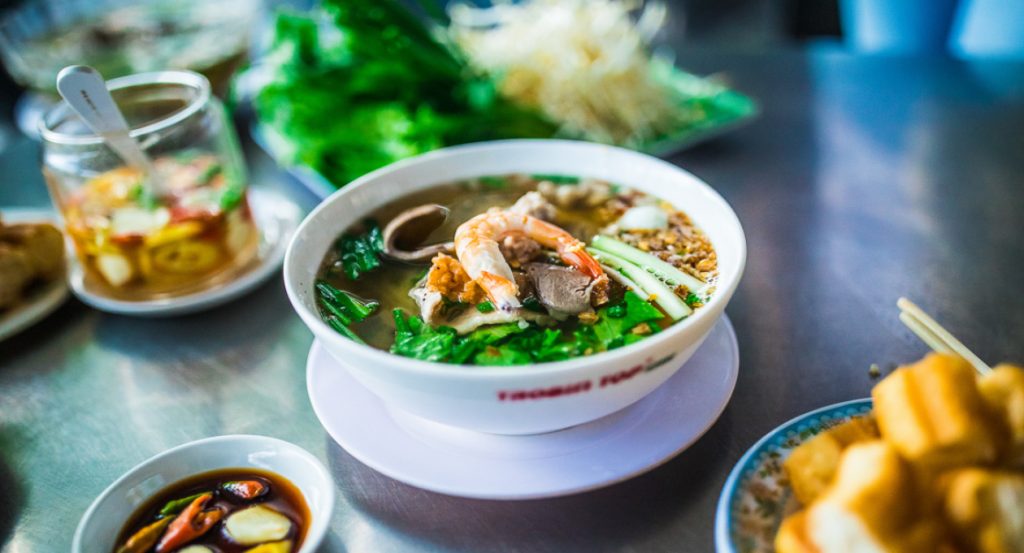
Eating like a local in Ho Chi Minh City
T – Timeless charm
Emerging from a painful past, much has been done to restore Vietnam’s many treasures and add even more. It is not only the natural world that draws visitors in, but also the people, culture, lifestyle, cuisine, and art. The honking of the ever-moving traffic in Hanoi and Ho Chi Minh City are a complete contrast to the tranquility of the countryside. The country presents a plethora of unforgettable images, from epic landscapes, ethnic cultures, legendary cuisine, and imperial monuments and continue through to its timeless village traditions, idyllic sea resorts, and bustling cities. The taste of egg coffee, using chopsticks to enjoy traditional dishes such as pho bo or bun cha, the ubiquitous conical hats, and the twinkling lanterns of Hoi An make for images that travellers will cherish forever.
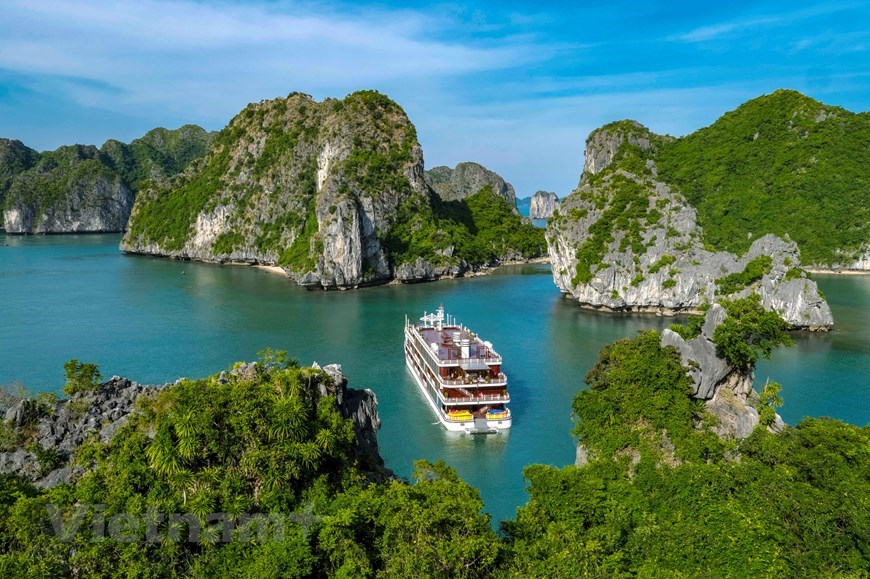
Touching the heritage on Vietnam’s first boutique cruise – Heritage Cruises Binh Chuan
N – Natural heritage sites
Vietnam takes pride in its diversity and has been blessed with some stunning UNESCO-recognised Natural Heritage Sites, such as Halong Bay, Trang An, Phong Nha-Ke Bang National Park, and Cat Ba Island. The world’s largest cave system, Son Doong stuns visitors with its otherworldly splendour and ecosystem.
Halong Bay, featuring a cluster of 1,600 islets, is one of the world’s natural wonders. Cruising through this karst landscape is a cinematic experience. Sailing beyond Halong Bay, visitors can get to Cat Ba Natural Heritage Site nestled in the heart of Lan Ha Bay, a treasure trove of flora and fauna. Trang An is another limestone world where the footprints of prehistoric humans and the fossils of extinct animals have been discovered. A bamboo boat ride along the Sao Khe River leads to mysterious underground caves and grottoes as well as ancient cave pagodas and temples.
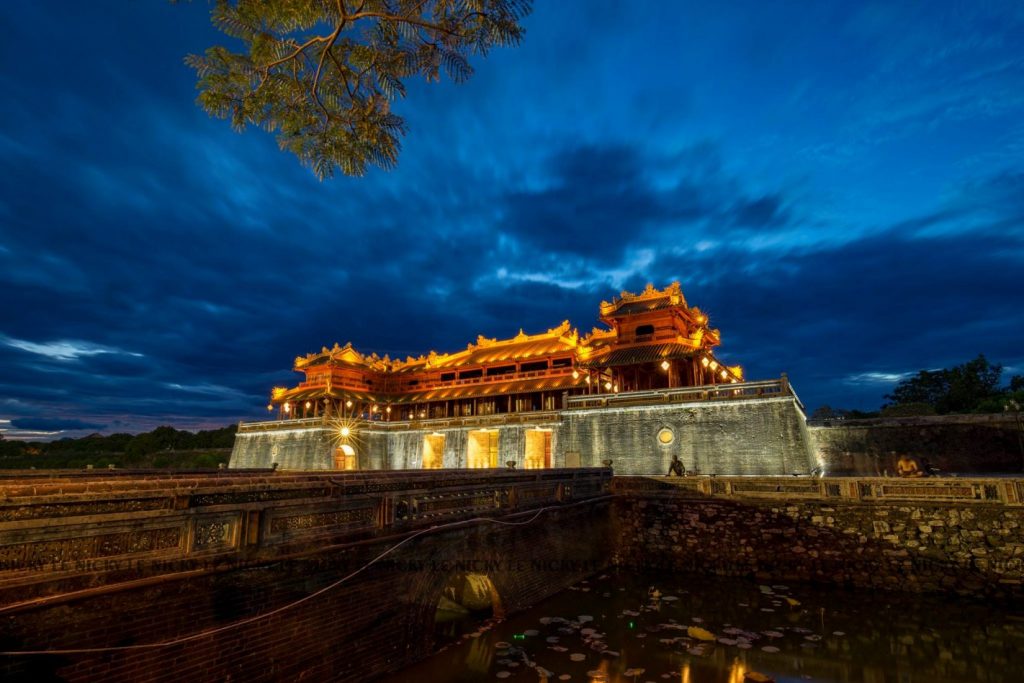
Visit Hue Citadel and explore the history of Nguyen Dynasty
A – Ancient cities
Hoa Lu in Ninh Binh was the ancient capital of Dai Co Viet (the ancient name of Vietnam). This ancient city, full of temples and pagodas dedicated to former kings, has witnessed many historical events. Its annual festival welcomes tourists from near and far. Hue is the last imperial capital of Vietnam and still preserves many relics from the royal empire. The Imperial Citadel of Hue, the royal tombs of King Minh Mang, King Khai Dinh, and other emperors along with the ancient Thien Mu Pagoda are just some of the major attractions of the former capital. UNESCO-protected My Son sanctuary dates back to the Pre-Angkorian era and was the capital of the Cham Dynasty. Hoi An was the most important port for trading in ancient Southeast Asia. The tranquil ambiance of this UNESCO-protected town, with its colonial architecture, traditions, and coffee culture, makes it a magnet for travellers. Further south, Dalat was one of the favourite hill stations for French garrisons and is filled with a plethora of colonial buildings. The Imperial Citadel of Thang Long marks the origin of today’s capital, Hanoi, dating back to the 11th century and the reign of the Ly Dynasty. Ho Chi Minh City is also an ancient establishment from the prehistoric era and witnessed one of the earliest Asian civilisations.
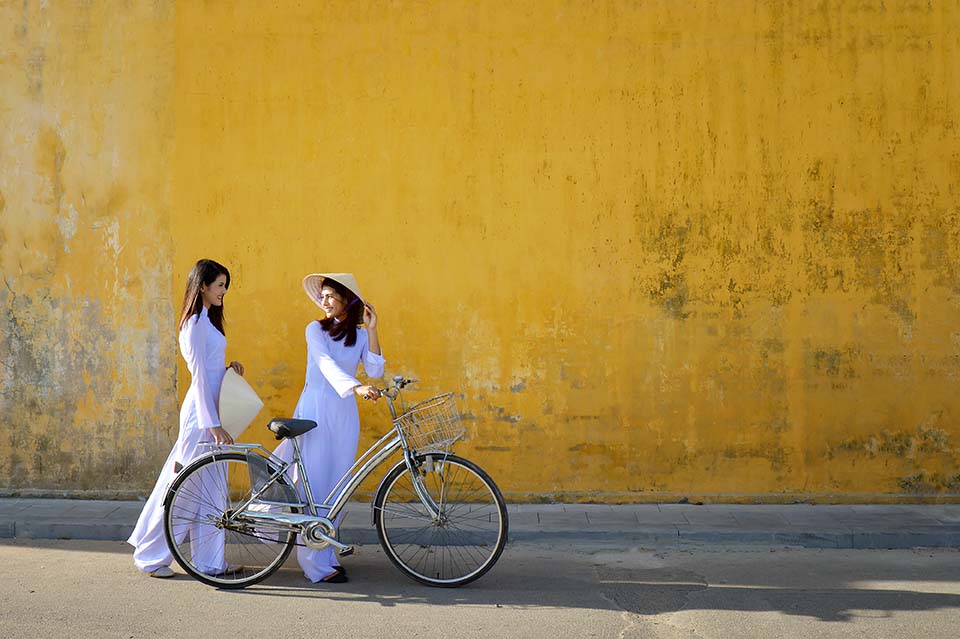
Biking tour visit Hoi An ancient town
M – Memories to cherish forever
Nothing quite compares to the charm that Southeast Asian countries and Vietnam have developed as a great holiday destination for both leisure and business travellers. It is a truly memorable experience travelling across the country, exploring the treasures of Halong Bay on a luxury cruise, savouring tasty Vietnamese dishes in the finest restaurants of bustling Ho Chi Minh City, relaxing on the idyllic sandy beaches of Phu Quoc Island or strolling through the lantern-lit alleys of ancient Hoi An. Holidaymakers will definitely fall in love with the food, landscapes, and lifestyle of Vietnam.
Once a hidden paradise, Vietnam is now fast emerging as an exciting upmarket destination in Asia, with a sophisticated hospitality industry. The recent development of world-class golf courses has opened a new avenue for golf tours to the nation. The introduction of luxury train journeys, boutique cruises, and upscale private tours spanning the length and breadth of the country has escalated the demand for new destinations and journeys. Travel is now all about places, experiences, and memories.

